Set Up TestNav on Linux
After you download TestNav, complete the setup using the sections below.
The Linux TestNav app does not support audio recorder items.
Install TestNav on Ubuntu
TestNav program files are saved in /opt/testnav.
To install TestNav through the CLI:
- Download the TestNav .deb file to your Downloads folder.
- On Ubuntu find and open the Terminal application.
- Enter this command: "sudo apt install ~/Downloads/testnav-version.deb", replacing "testnav-version.deb" with the downloaded file name.
- Enter the administrator password if prompted (the password will be invisible in the terminal while typing it).
- Once the install has completed, you can exit the Terminal and open TestNav.
Run App Check
- Click or tap the appropriate icon for your test from the home page to go to the Sign In page.
Click or tap the user drop-down menu, and select App Check.
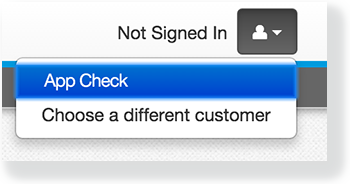
App Check (without optional Configuration Identifier)
On the App Check page:
Leave the configuration identifier field blank.
Click Run App Check.
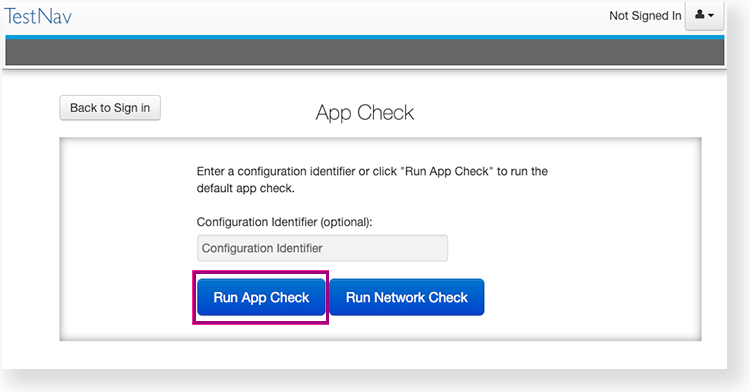
You see green checkboxes for Kiosk Mode readiness and connectivity to TestNav, if the system passes. If one of these fails, you will see a Fail message and must check your connection and settings before running App Check again.
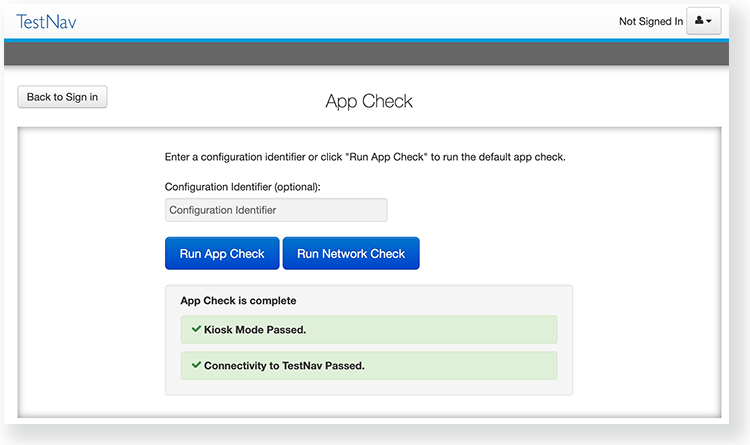
App Check (with optional Configuration Identifier)
If you have obtained a Configuration Identifier from your assessment management system:
Enter it in the Configuration Identifier field on the App Check page.
The configuration identifier allows TestNav to also check connection to ProctorCache computers. If your assessment management system allows, this configuration ID may also check for blocklist compliance. See your assessment management system documentation for additional information.
Click Run App Check.
If ProctorCache connectivity (or blocklist compliance) fail, TestNav provides information for possible resolutions. Use this information to troubleshoot, and run App Check again.
Run Network Check
On the App Check page,
Click Run Network Check.
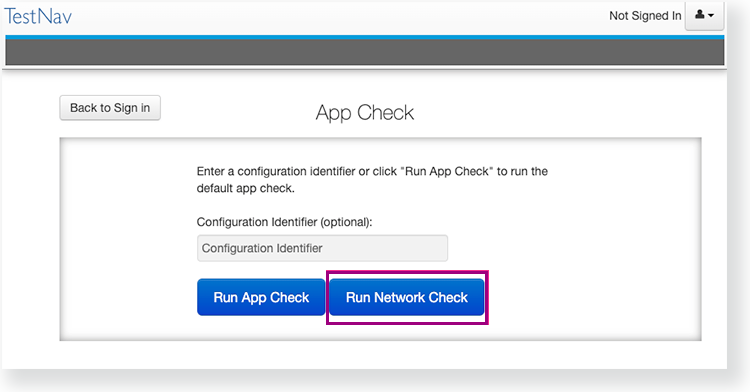
Estimate the number of devices that will connect to your network during testing, and enter it into the Number of devices field.
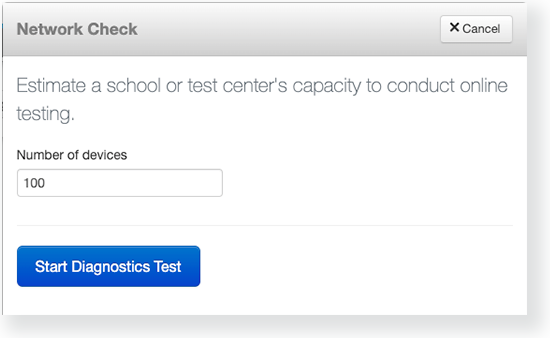
- Click Start Diagnostics Test.
See your Test Results under Network Diagnostics to determine whether your network has sufficient bandwidth to test without ProctorCache.
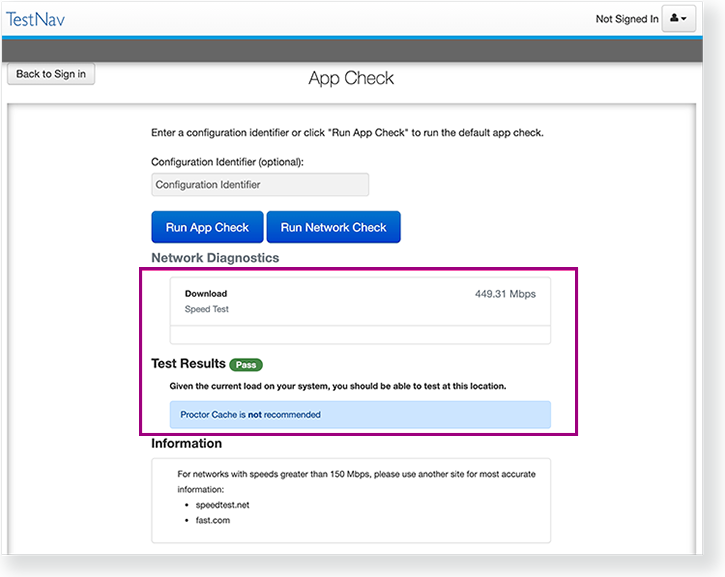
Sign in to TestNav on Ubuntu
- Click the Ubuntu logo and enter testnav in the search box to find TestNav.
- Double-click the TestNav icon to launch TestNav.
If you have not already done so, click the appropriate program icon to select your test. If your test was selected prior, you see the Sign In page, rather than the home page.
If you need to select a different test, click the user drop-down menu in the upper-right, and click Choose a different customer.
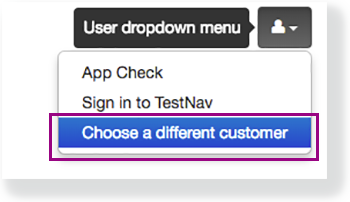
Click the appropriate program icon.
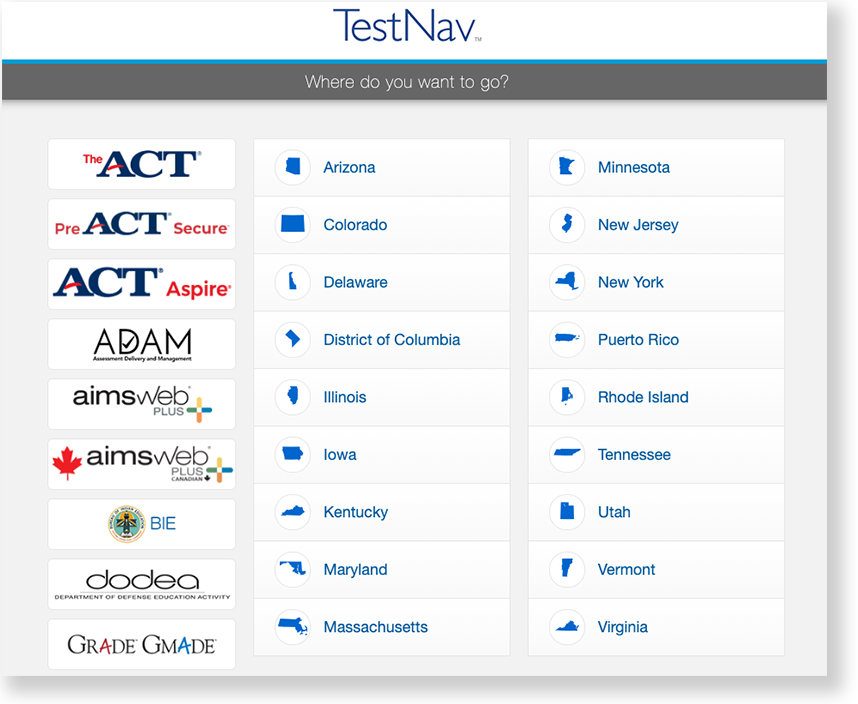
Start a test to ensure that you can do so without error.
- If you see a Practice Tests link on the Sign in page, click Practice Tests and start a test.
- If you do not see a Practice Tests link, use an authorization ticket from your assessment management system and start a test.
- If a Settings page appears, make any necessary selections, click Select, and then Start.
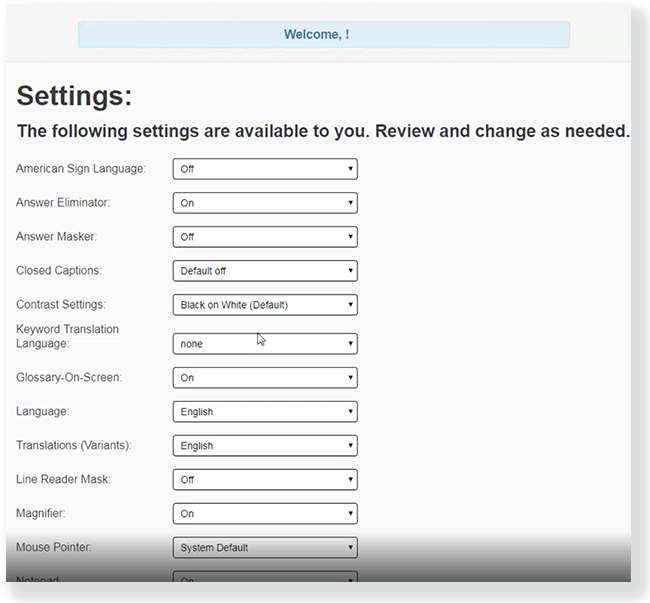
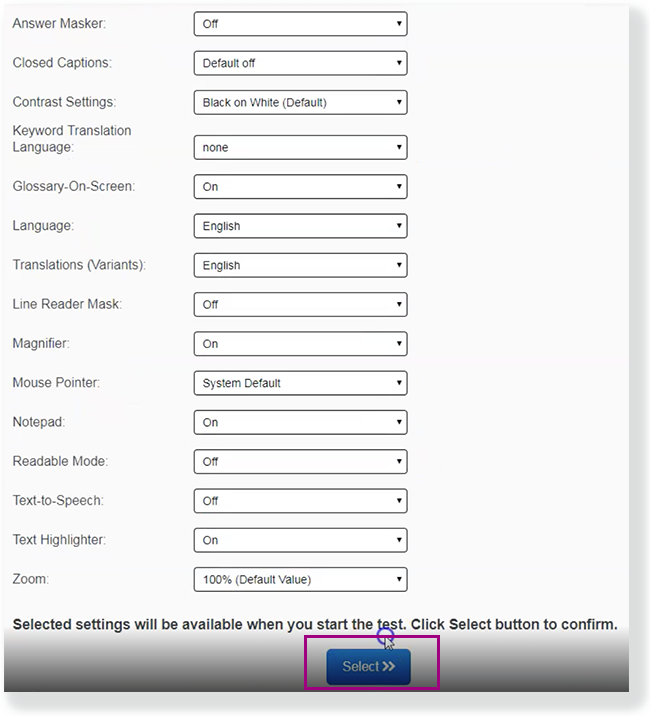
- If the test requires audio, click Enable Your Microphone to set it up. Follow instructions to on the Test Your Microphone window to select an available microphone, record audio, and play it back.
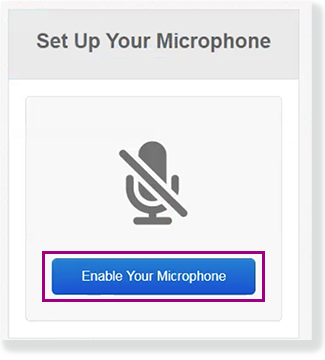
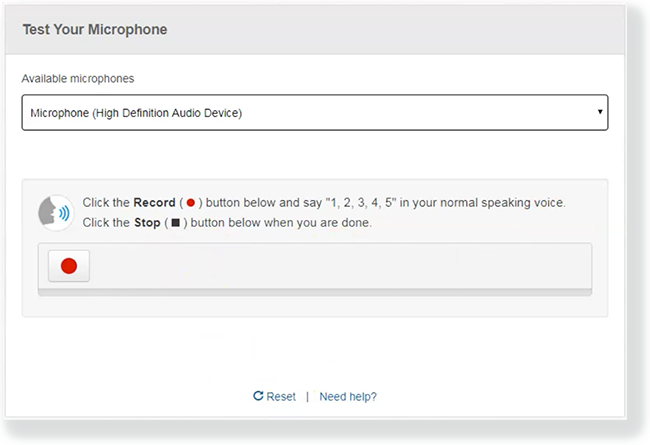
- Click Sounds Good to continue to the test items.
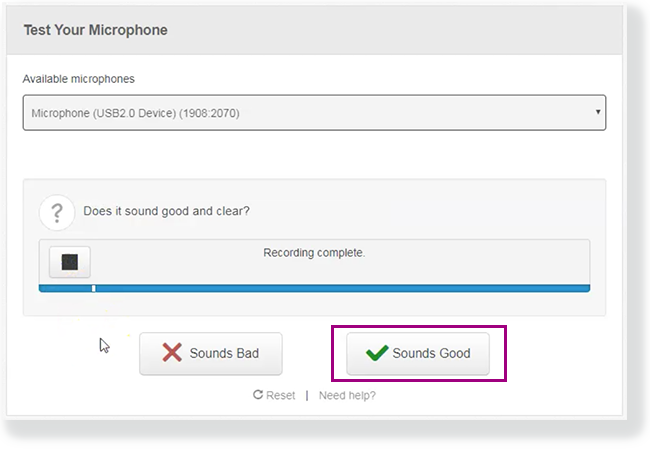
- Click Sounds Bad > Reset to start microphone selection and test again.
Clicking Need help? prompts you (or the student) to raise a hand for teacher assistance.
- Click Sounds Bad > Reset to start microphone selection and test again.
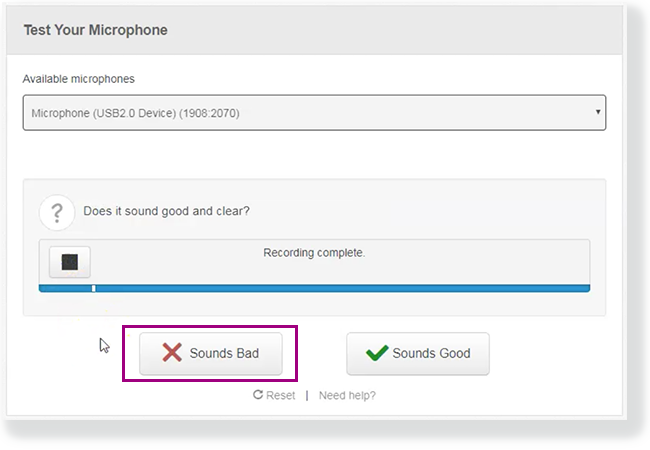
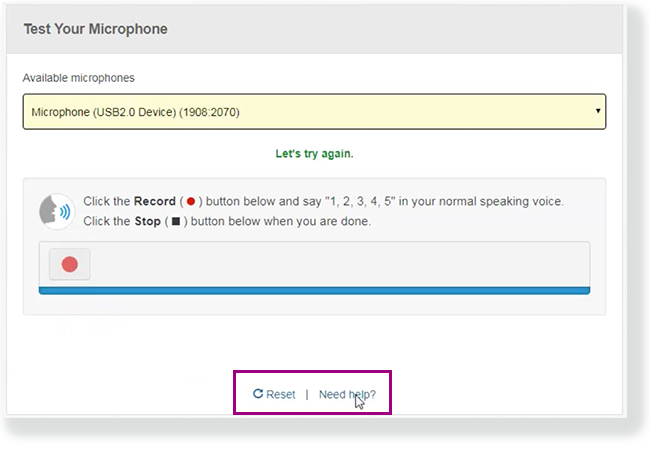
TestNav App Updates
TestNav program file updates are saved in {user_home}/.config/Pearson. You must give students write access to the update directory.
- Any necessary patch updates automatically install whenever TestNav starts or when a student attempts to log in. This ensures the update is implemented even if schools leave TestNav running over the course of a few days.
You can also push the latest TestNav update, rather than waiting until each student opens TestNav. To push an update, take a snapshot of the Pearson folder, and push that folder to all student computers. - Updates that require reinstallation are scheduled for winter and summer breaks.
- Pearson will communicate all updates with instructions in advance.
When you install TestNav, it creates the TestNav folder within the Pearson folder shown in the path above. The TestNav folder contains the following:
- The update file folder, named with the update version number (for example, 1.4.1)
- The default file, which stores the customer login preference for the next login
The login preference stored in the default file can change if you select a different customer from the Sign In page. You can set the default file to read-only to prevent students from overwriting it after you set your test preference.
If you encounter any issues during an update, you can find the errorlog folder within the update folder (for example: 1.4.1 > update > errorlog). The errorlog folder logs any issues TestNav may encounter when it attempts an update. You can also delete the Pearson folder to reset TestNav, clearing out any updates stored in that directory.
Set Up Response File Backups
SFTP configuration is not supported by all assessment management systems. Consult your assessment management system user guide to determine whether the SFTP option is available.
- Configure student accounts to have complete read, write, and delete access in these save locations.
- Communicate SRF and log file locations to test proctors.
- Give proctors access to SRF and log files by either of the following:
Grant admin rights to proctors on each testing computer.
Instruct proctors to access these files while the student is logged in to the testing computer.
- (Optional) Configure primary and a secondary save location through your assessment management system.
Default Primary Save Location
| Operating System | SRF Location | Log File Location |
|---|---|---|
| Linux | {USER.HOME}/Pearson/srf/ | {USER.HOME}/Pearson/logs/ |
Secondary Save Location
You can set a secondary save location through your assessment management system. Set a secure file transfer protocol (SFTP) address as the save location to ensure that the secondary save applies to all testing computers and devices.
Pearson strongly recommends that you configure a network drive as a secondary save location to ensure that you do not lose responses, even if a student cannot continue to test on the same computer.
Run an Infrastructure Trial
Pearson strongly recommends running an infrastructure trial to verify the technology setup is complete and to familiarize teachers and students with the test. Use your training site through your assessment management system to complete the trial before the actual test day.
Related Information
You can learn more about SRF and log files on the Set Up and Use TestNav page.